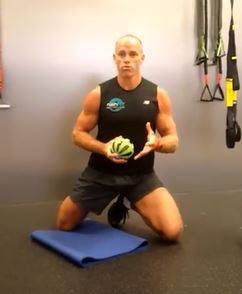Add Good Vibrations into your Workout Routines

A new trend in the fitness industry that just may hold some staying power is Vibration therapy, a technique that utilizes tools of various shapes and sizes to warm-up, release muscles and break down tight adhesions. Some describe it as a ‘jack-hammer for your body” or “having your own on-demand massage therapist” or “a foam roller on crack.” Many professional athletes including Lindsey Vonn and hundreds of professional teams have adopted the technology claiming multiple performance and recovery benefits resulting in the quick growth and popularity of these products.
Multiple vibration products have surfaced that have become popular amongst elite level athletes, weekend warriors and non-athletes dealing with muscle aches and pains. The Vyper 2.0 created by Hyperice looks like a standard Foam Roller, however, it has a motor operated by rechargeable batteries and vibrates while you roll over tight muscles. There are 3 settings from a lighter vibration to a more aggressive setting. There are other products offered by Hyperice including the Hypersphere which acts as a vibrating massage ball, or the Hypervolt, shaped like a power tool, allowing users to better target different areas of the body.
Other brands including Hyperice, TriggerPoint and TheraGun provide this type of technology making this type of muscle preparation and recovery more convenient and readily accessible. Although not cheap with products ranging from $100-$600, many athletes claim that over time they spend less money on other therapies and seem happy to pay the price to enhance performance and reduce the chances for getting injured.
So how do these products work? The vibration sends a signal to the muscles to contract thereby increasing blood flow to the muscles resulting in warmer muscles and connective tissue. In this way they are used to prepare the muscles for a workout. Vibration products can also be used at a lower speed for relaxing and releasing muscles and at higher speeds for breaking down adhesions. One study found a 40% increase in range of motion after using vibration therapy. Some have reported the technology helps to reduce muscle soreness but research is inconclusive and inconsistent. The therapy is relatively new so more research needs to be conducted but current studies and anecdotal reports are very promising.
You can review the products and more detailed information at the following websites:
• Hyperice
• TriggerPoint
• TheraGun
Note: As an avid Columbian reader, you can redeem a 2 week pass at her world-class training studio to help get you started. Contact 360.574.7292 for more details.

